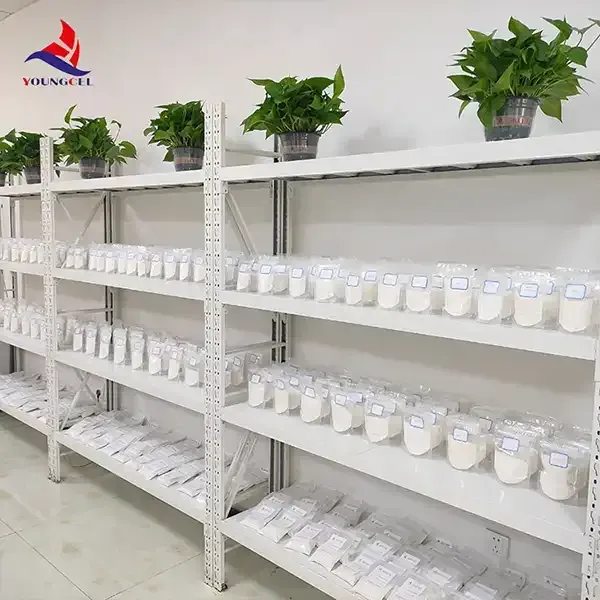The Role of Cellulose Coating in Modern Applications
Cellulose is one of the most abundant natural polymers on Earth, derived primarily from plant cell walls. Its unique structure and properties have made it a subject of interest across various industries, particularly in the realm of coating technologies. The use of cellulose coatings has gained prominence due to their biodegradable nature, non-toxicity, and excellent barrier properties, aligning well with the increasing demand for sustainable and eco-friendly materials.
Properties of Cellulose Coating
Cellulose coatings come in various forms, including cellulose acetate, cellulose nitrate, and carboxymethyl cellulose, each exhibiting distinct properties that make them suitable for different applications. One of the primary characteristics of cellulose coatings is their ability to form a protective barrier against moisture, oxygen, and other environmental factors. This makes them invaluable in food packaging, where they help extend shelf life by preventing spoilage.
Additionally, cellulose coatings are known for their excellent adhesion and flexibility. They can be applied to a wide range of substrates, including paper, plastics, glass, and metals. This versatility allows for innovative applications in several fields, from packaging to electronics, where a reliable coating is vital for functionality and durability.
Applications in Food Packaging
In the food industry, cellulose coatings are becoming increasingly popular due to their biocompatibility and biodegradability. Traditional packaging materials often contribute to environmental pollution, leading to a search for sustainable alternatives. Cellulose coatings help to create biodegradable packaging that does not compromise on performance. These coatings provide a barrier to moisture and oxygen, which is crucial for maintaining the freshness of food products.
Moreover, as consumers become more environmentally conscious, there is a growing demand for eco-friendly packaging solutions. By using cellulose coatings, manufacturers can cater to this demand while also meeting regulatory requirements concerning food safety and environmental impact. The incorporation of cellulose-based coatings not only enhances the sustainability of packaging but also complies with standards, such as those set by the Food and Drug Administration (FDA) in the United States.
Role in Electronics
cellulose coating

Beyond food packaging, cellulose coatings are emerging as vital materials in the electronics sector. They can be used as protective layers for electronic components, providing excellent moisture resistance and mechanical protection. For instance, cellulose coatings can help protect circuit boards from environmental stress, prolonging the lifespan of electronic devices.
Another notable application is in the manufacturing of organic light-emitting diodes (OLEDs) and organic solar cells. Cellulose coatings can serve as barriers to oxygen and moisture, crucial factors that could otherwise degrade the performance of these devices. As the demand for flexible and lightweight electronic products grows, the adoption of cellulose coatings is expected to expand further.
Sustainable Development Goals
The integration of cellulose coatings aligns with several sustainable development goals (SDGs), particularly those aimed at responsible consumption and production. As industries gradually shift towards sustainability, cellulose coatings offer a pathway to achieving circular economy principles. They can be sourced from renewable materials, and their biodegradability contributes to minimizing waste and environmental impact.
Challenges and Future Prospects
Despite the numerous advantages of cellulose coatings, there are still challenges to overcome. One significant barrier is the scalability of production and the economic viability of cellulose-based materials compared to conventional coatings. Research into refining the manufacturing processes and enhancing the performance characteristics of cellulose coatings is ongoing.
Furthermore, innovation in cellulose chemistry could lead to the development of new derivatives and formulations that enhance properties such as water resistance, UV protection, and thermal stability. As such advancements occur, the potential applications for cellulose coatings could expand even further, paving the way for their use in more high-tech environments, such as medical devices and advanced materials.
Conclusion
Cellulose coatings stand out as a sustainable and versatile solution applicable in a myriad of fields. Their ability to provide effective barriers while aligning with environmental goals makes them particularly relevant in today's context of increasing ecological awareness. As research advances and technology evolves, the future of cellulose coatings appears promising, offering innovative solutions for both industry and the environment. Embracing these natural materials could be key to navigating the challenges of sustainability in the modern world.
-
Rdp that The Revolutionary Polymer Powder Transforming Modern Construction MaterialsNewsAug.11,2025
-
Hpmc Powder that Versatile Additive for Detergents and Personal CareNewsAug.11,2025
-
Hpmc Hydroxypropyl Methylcellulose that Essential Building Material Additive from Shijiazhuang Gaocheng YongfengNewsAug.11,2025
-
Hydroxypropyl Methyl Cellulos Hpmc that Essential for Construction ApplicationsNewsAug.11,2025
-
Mhec Powder that Revolutionizing Construction Chemistry with Cellulose Ether SolutionsNewsAug.11,2025
-
Industri Hpmc that The Global Backbone of Advanced ConstructionNewsAug.11,2025




